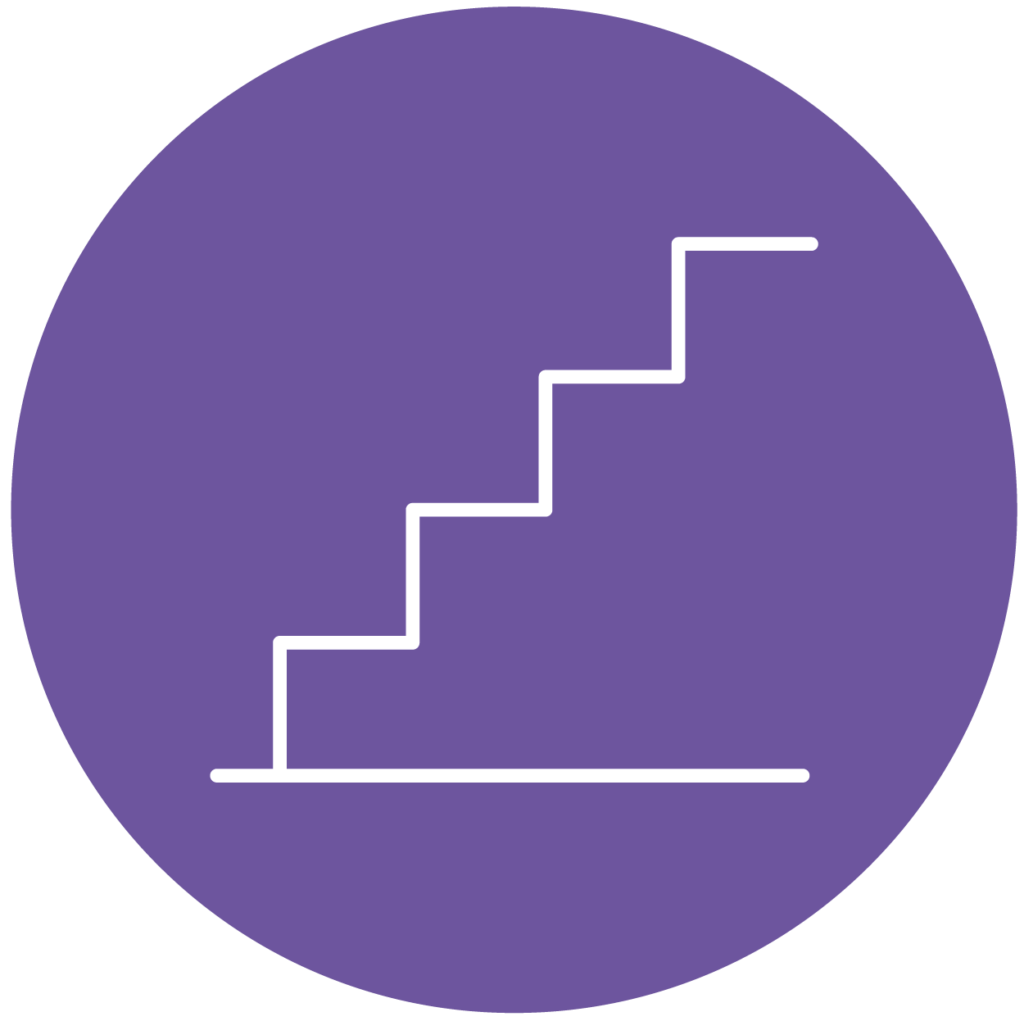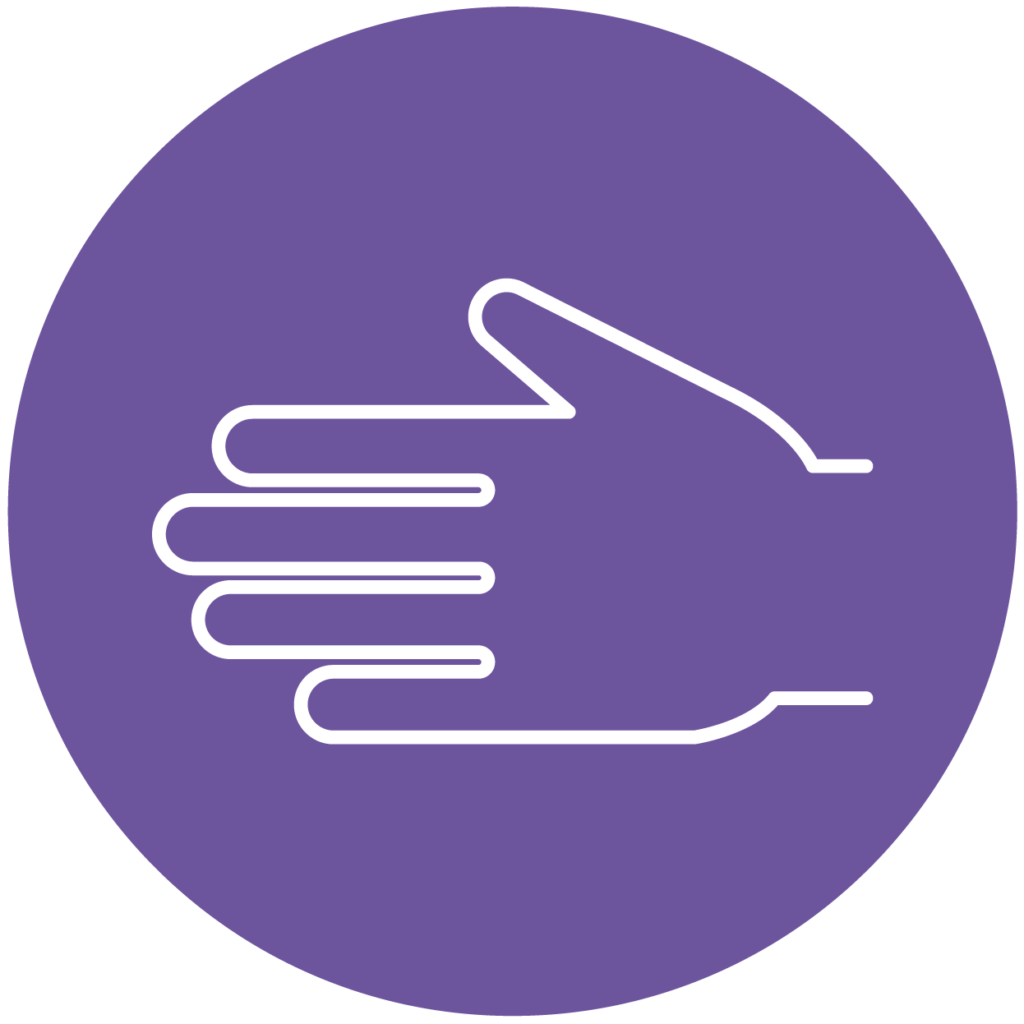Healthcare Professional Portal
In response to a recognised need for increased awareness of NDM,6 our goal is to help healthcare professionals recognise NDM more confidently by broadening understanding of the physical, emotional and practical impact of NDM on those it affects.
As rare doesn’t mean never, equip yourself with NDM knowledge today to help your patients tomorrow.

What is NDM?
Non-dystrophic myotonias (NDMs) are rare neuromuscular disorders, characterised by debilitating muscle stiffness (myotonia) and caused by mutations in sodium or chloride ion channels in the muscle cell membrane.1-3
The prevalence of NDM varies by country but is estimated to be 1 in 100,000 people in the EU.1 Although NDM can be referred to as ultra-rare, the impact it has on individual patients is considerable,4 with most experiencing daily symptoms, including muscle stiffness (myotonia) and pain.
Being ultra-rare, NDM can easily be misdiagnosed and/or misunderstood, even by those who are experienced in neuromuscular disorders. People with NDM frequently wait for 10 years or more before being correctly diagnosed.5
We want to improve this situation through collaboration with all those who have an interest in improving diagnosis and care for people with NDM.
Pathophysiology of myotonia in NDM
People with NDM carry inherited genetic mutations in voltage-gated ion channels that co-ordinate and control skeletal muscle contraction and relaxation.7
NDM include sodium channelopathies, which occur when the SCN4A gene is mutated, and chloride channelopathies when the mutation is in the CLCN1 gene.8
For patients, these ion-channel mutations lead to muscle membrane hyperexcitability, causing delayed muscle relaxation after voluntary contraction or percussion.9
NDM-related myotonia exclusively affects skeletal muscle and may occur more frequently when movement is suddenly initiated after a resting period; however, symptoms and symptom triggers can vary between NDM subtypes.9,10
Inheritance and genetics
NDM covers a group of inherited genetic disorders. Each NDM subtype shares the same muscle stiffness symptom of myotonia, but each has a different pattern of inheritance, channelopathy, triggers and location of muscle symptoms.1,9 Thomsen myotonia congenita, paramyotonia congenita, dyskalemic episodic paralysis and potassium-aggravated myotonia are inherited in an autosomal-dominant manner, while Becker myotonia congenita is an autosomal-recessive disorder.1,9 Family history should be considered whenever a patient presents with suspected NDM.
Autosomal dominant inheritance of Thomsen myotonia congenita, paramyotonia congenita, dyskalemic episodic paralysis and potassium aggravated myotonia.
Autosomal recessive inheritance of Becker myotonia congenita
Physical and psychosocial burdens of NDM
NDM is an ultra-rare disease that has a significant negative impact on the quality of life of people with the disease and detrimentally affects the people who care for them.5

People with NDM may struggle to exercise or even carry out simple movements such as walking up the stairs.2
Although muscle stiffness or muscle locking (myotonia) is the common symptom shared by all NDM subtypes, the full physical effects of NDM are broad and can also include cramps, myalgia, transient weakness, fatigue, muscle hypertrophy, dysphagia, and dysphonia.2 Myotonia causes obvious movement difficulties, such as problems with walking, running, and climbing stairs, or difficulty re-opening eyes or grip release after a handshake,6 but hidden symptoms of NDM, including pain and fatigue, also have negative effects on general health perception, vitality, physical and social functioning.4

Struggling to open your hand after clenching your fist may be a sign that you have NDM.6
In the 2020 Impact of non-dystrophic Myotonia on Patients and Caregivers’ quality of life (IMPACT) survey conducted in Europe and the USA, the majority of patients with NDM (N=181) experienced daily or continuous limb muscle stiffness (myotonia) and mobility problems, while nearly half said they had continuous tiredness and pain.5,11 Other patient-reported symptoms, occurring at least sometimes, included gastrointestinal issues (69%), being unable to open eyes after sneezing/ blinking (64%), a risk of dropping drinks (62%), and dysphagia when consuming cold drinks or food (45%).

Muscle symptoms have physical, social, practical and study/employment implications for people with NDM.3,5,8,11 In particular, problems with using public transport, embarrassment about symptoms and social anxiety5,8,11 can cause feelings of helplessness, isolation or the need to rely on others.
The IMPACT survey found that 27% of respondents rated their health-related quality of life as low.5,11

The considerable burden of NDM is further carried by family and friends; 45% of caregivers who responded to the IMPACT survey reported that they spend ≥5 hours per week caring for someone with NDM, with 29% spending ≥10 hours per week.11 The responsibility of caregiving had negative mental health impacts on 42%, and 25% reported that their physical health is affected.5
Long patient journey to diagnosis
People with NDM often face a long journey to receive a diagnosis and appropriate healthcare intervention.
Although signs of NDM manifest during childhood or early adulthood,10 mild and transient symptoms may be initially overlooked, for example falls and an abnormal gait are dismissed as normal during paediatric development.4,5,12 Therefore, unless other relatives have been diagnosed with (and are therefore aware of) NDM, pathological signs can go unrecognised for several years.5
In the absence of a known genetic risk and family screening, the NDM medical journey typically begins in a primary or general medical clinic. However, NDM is rarely encountered outside neuromuscular specialist centres and so may not initially be considered as a diagnosis. Furthermore, patients may report non-specific symptoms eg “tight muscles” or “weakness”5 that prompt referrals to healthcare professionals without awareness or the specialist knowledge needed to recognise possible NDM.
Overall, people with NDM frequently experience diagnostic delays of 10 to 17 years.5,10 Improving the early and accurate detection of NDM – reducing the time patients and their families spend searching for answers – remains a significant need.
NDM is formally diagnosed and managed in specialist neuromuscular centres, but the patient journey may start years before with nonspecific or unusual features. General medical professionals are therefore the gateway to the specialist care that people with NDM rely on to live the best life possible.
References
- Hahn C & Salajegheh MK. Iran J Neurol 2016;15:46–53.
- Stunnenberg BC, et al. Muscle Nerve. 2020;62:430–444.
- Trivedi JR, et al. Exp Neurol. 2014;253:28–30.
- Trip J, et al. J Neurol 2009;256:939–47.
- Diaz-Manera J, et al. EMJ Neurol. 2021;6:37-46.
- Auranen M, et al. EMJ Neurol. 2022;10:66-77.
- Jitpimolmard N et al. Curr Treat Options Neurol. 2020;22:34.
- Matthews E, et al. Pract Neurol. 2021;21:196-204
- Matthews E, et al. Brain. 2010;133:9-22.
- Vereb N, et al. J Neurol. 2021;268(5):1708-20.
- Diaz-Manera J, et al. 16th International Congress on Neuromuscular Diseases (ICNMD) 2021a, Virtual meeting, 21-22, 28-29 May. ePoster: P742.
- Matthews E, et al. J Pediatr. 2017;188:181-5.e186



